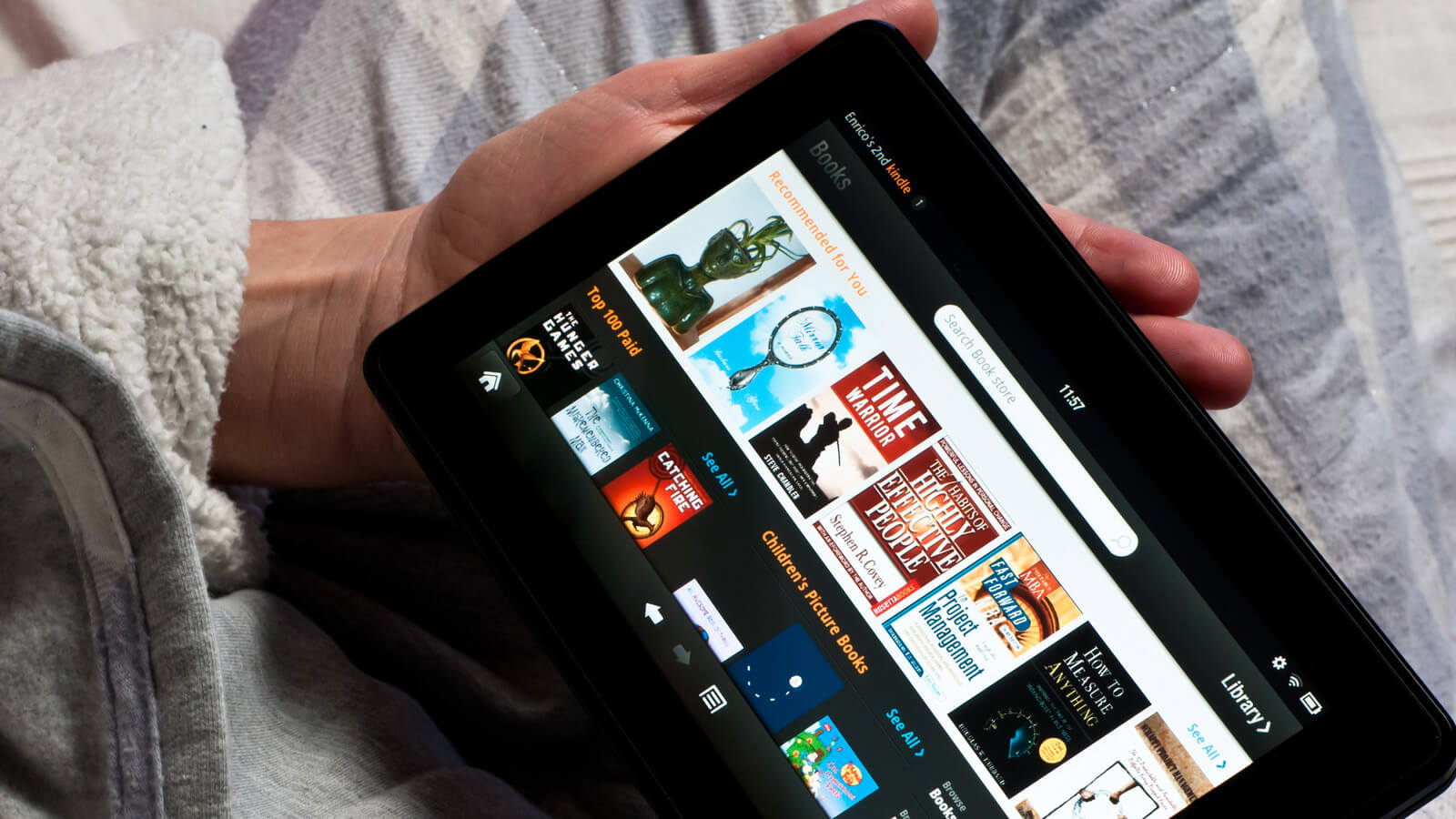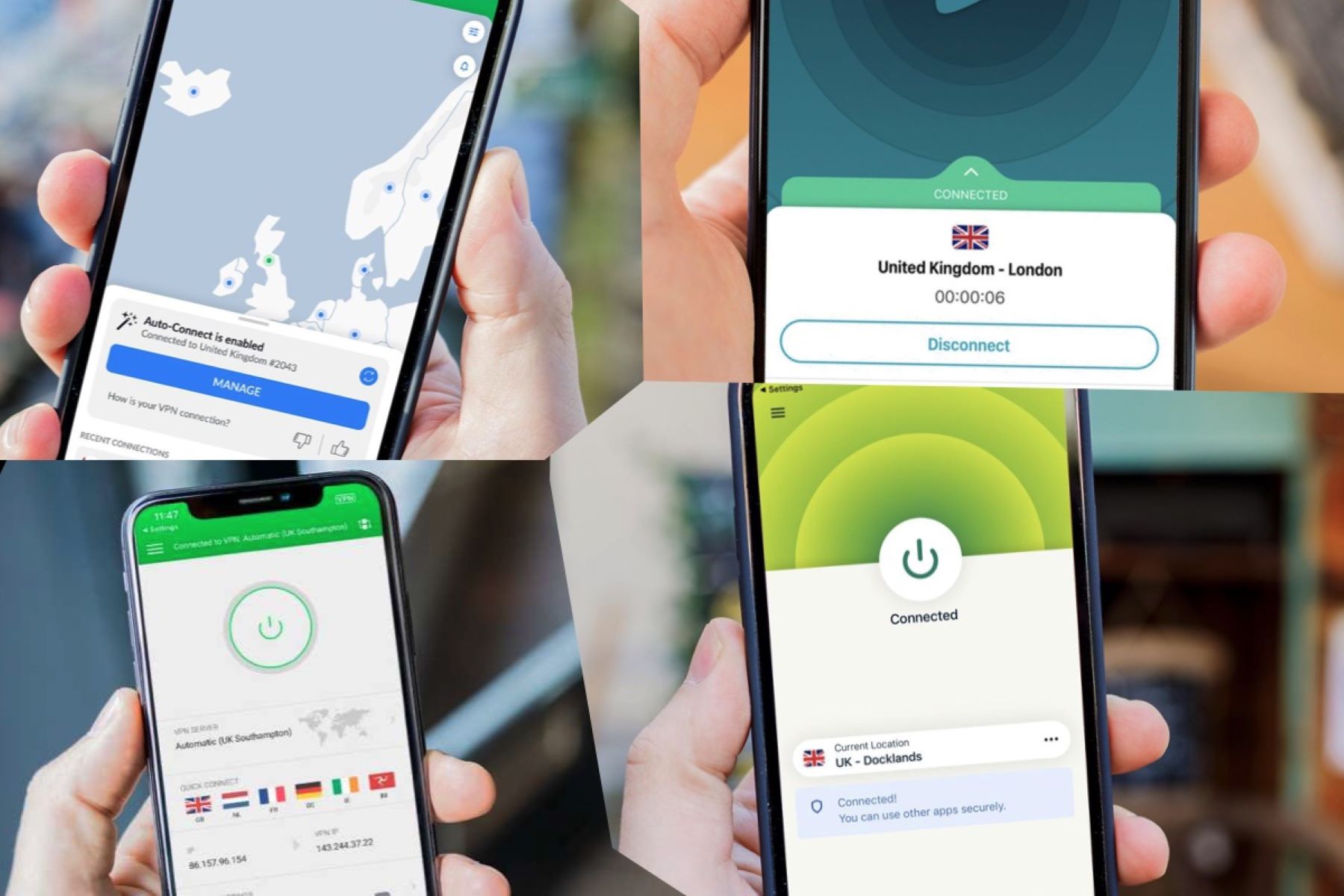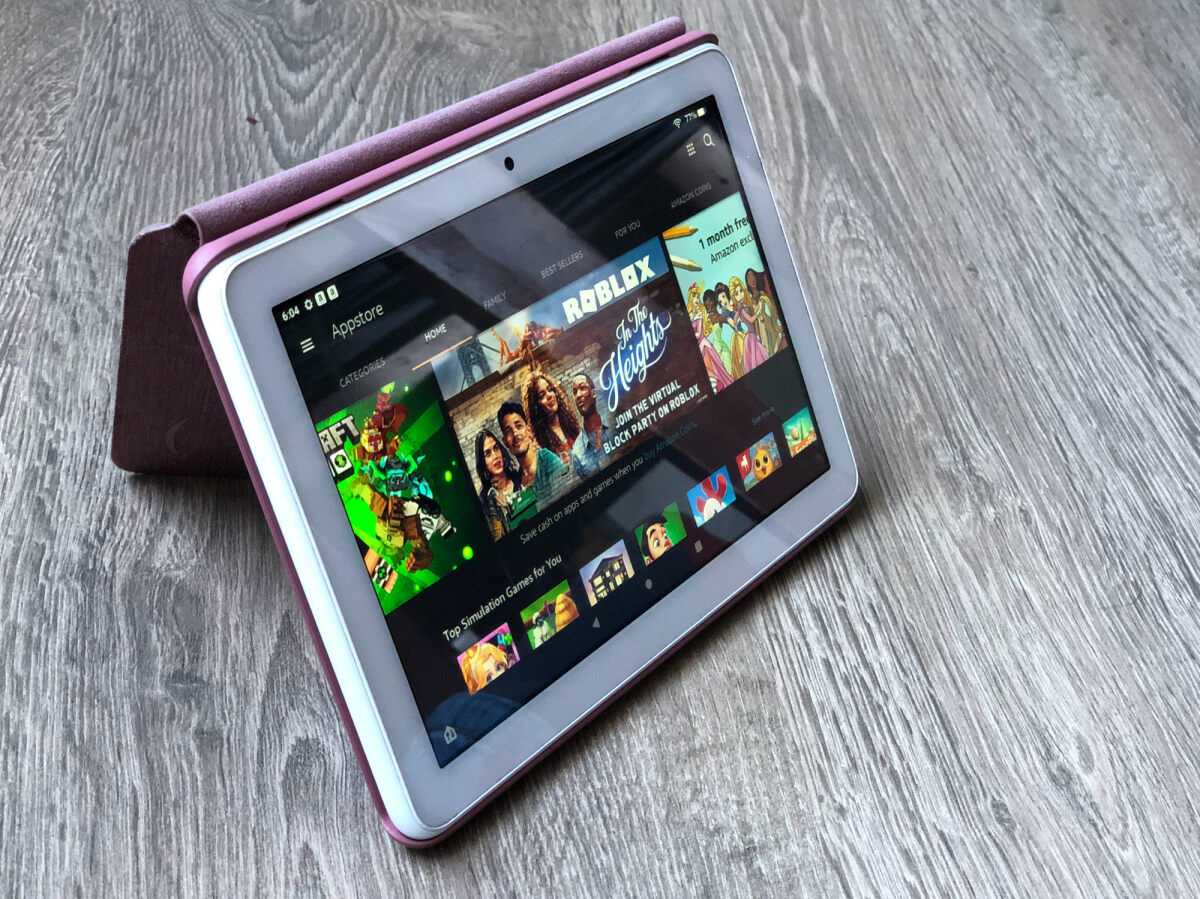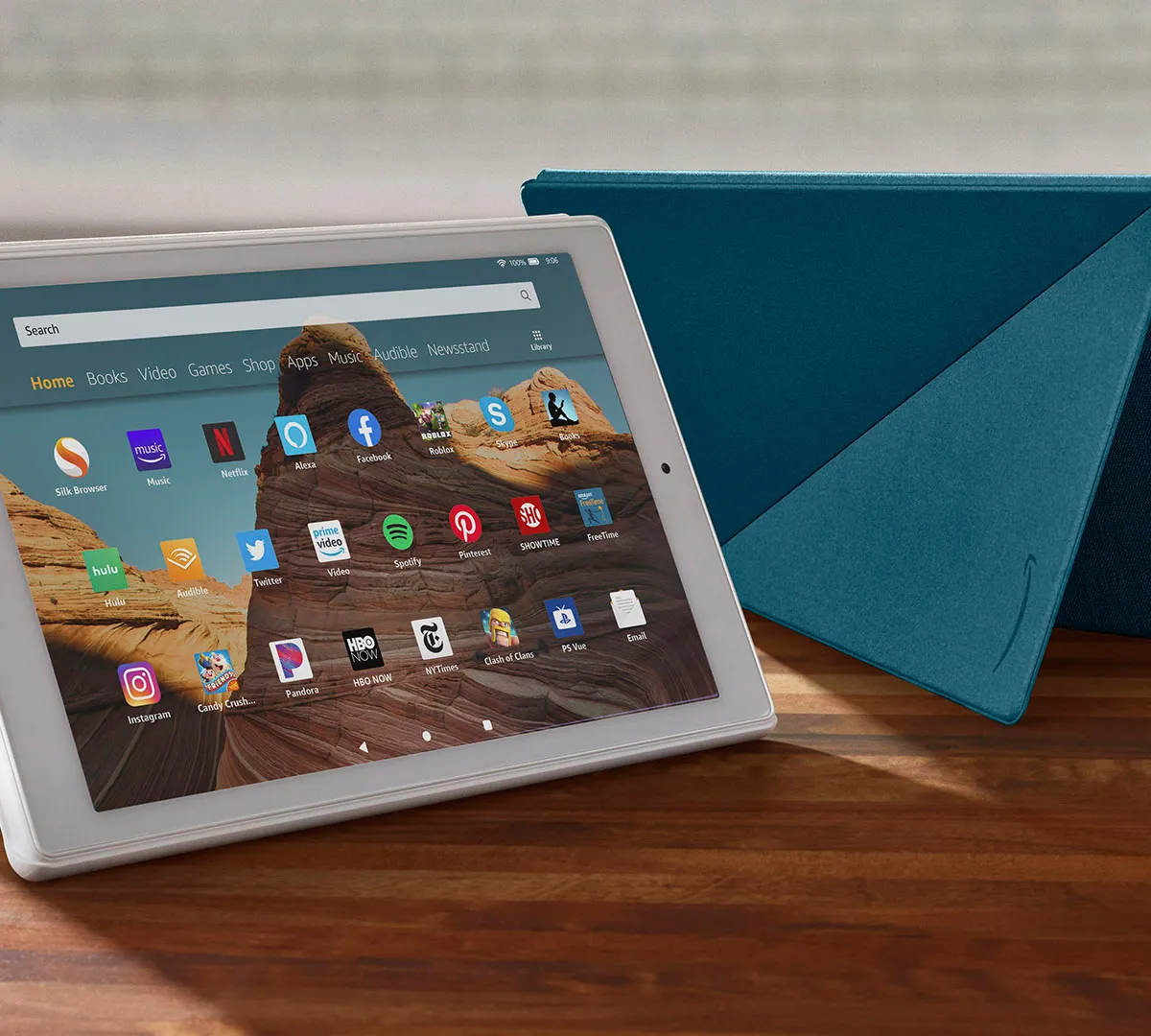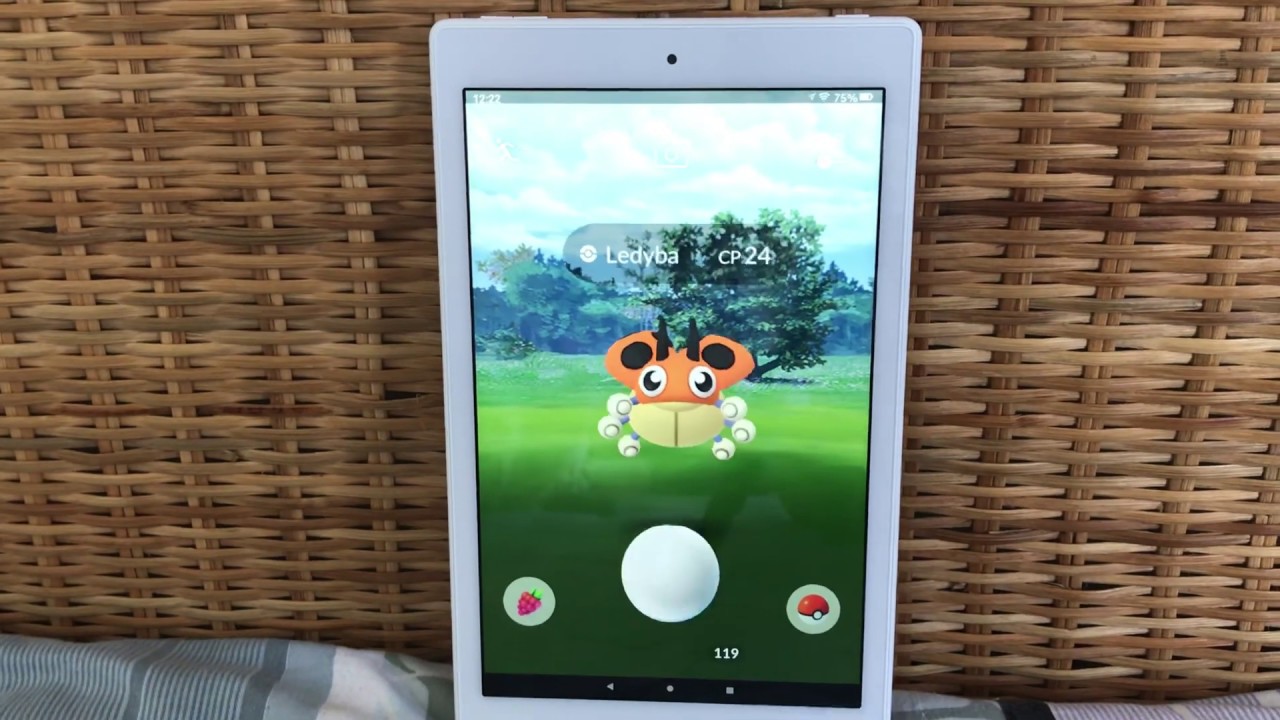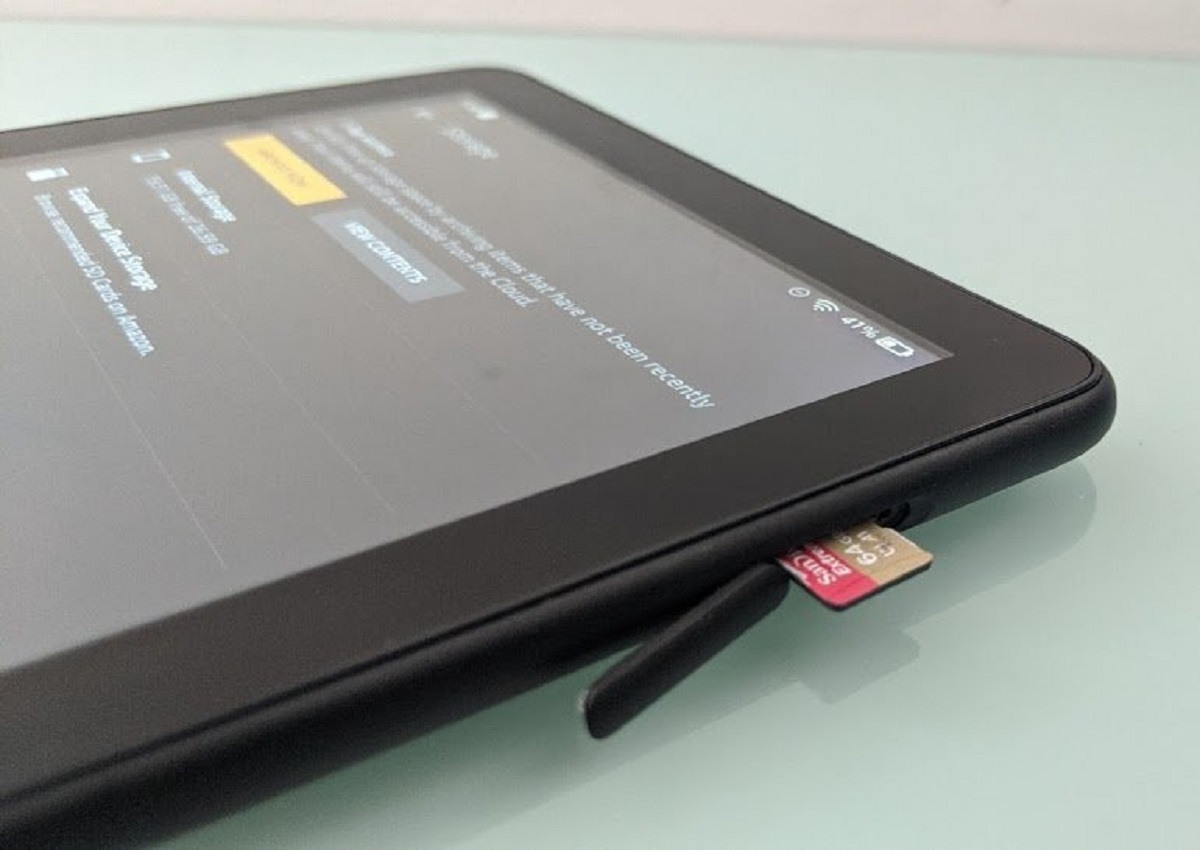Introduction
Welcome to our guide on how to speed up your Fire Tablet! If you’ve noticed that your tablet has been running slow lately, you’re not alone. Over time, tablets can become sluggish due to various factors such as a cluttered storage, unnecessary apps running in the background, outdated software, or even excessive cache data.
Fortunately, there are several steps you can take to optimize the performance of your Fire Tablet and get it back to running smoothly. In this guide, we will walk you through the process of cleaning up storage, disabling unused features, clearing cache and data, and more. By following these steps, you can improve the speed and responsiveness of your Fire Tablet, making your overall experience more enjoyable.
Before we dive into the specific tips, it’s important to mention that these steps are applicable to most Fire Tablet models, including the Fire 7, Fire HD 8, and Fire HD 10. So, regardless of the model you own, you’ll be able to implement these suggestions to enhance your tablet’s performance.
In the following sections, we will provide you with an easy-to-follow step-by-step guide on how to speed up your Fire Tablet. From cleaning up storage and removing unnecessary apps to optimizing battery usage and using a lightweight browser, we have you covered. So, let’s get started and make your Fire Tablet run faster than ever before!
Why is Your Fire Tablet Running Slow?
There can be multiple reasons why your Fire Tablet is running slow. Understanding these factors can help you identify the root cause and take appropriate steps to improve its performance. Here are some common reasons for a slow Fire Tablet:
- Low Storage: If your tablet has limited storage space available, it can impact its speed and responsiveness. When your device is running low on storage, it can struggle to execute tasks efficiently, leading to slower performance.
- Unnecessary Apps: Having too many apps installed on your Fire Tablet, especially those that run in the background, can consume system resources and slow down your device. These apps may continue to use memory, processing power, and network data, even when you’re not actively using them.
- Unused Features: Fire Tablets come with a range of features and settings that you may not utilize regularly or at all. These features may continue running in the background, consuming system resources and affecting your tablet’s performance.
- Cache Buildup: Over time, the cache files generated by various apps and websites can accumulate and take up valuable space on your device. These cached files can also affect the performance of your Fire Tablet by slowing down operations and increasing load times.
- Outdated Software: Running outdated software on your Fire Tablet can lead to compatibility issues, security vulnerabilities, and degraded performance. It’s essential to keep your device’s software up to date to benefit from bug fixes, performance improvements, and new features.
By understanding these underlying reasons, you can tackle the specific issues causing your Fire Tablet to run slow. In the following sections, we will explore various strategies and troubleshooting steps to address each of these factors and help you boost your tablet’s speed and performance.
Step 1: Clean Up Storage
One of the primary reasons for a slow Fire Tablet is a cluttered storage. When your device’s storage is filled with unnecessary files and data, it can hinder its performance. Follow these steps to clean up your tablet’s storage:
- Delete Unneeded Files: Start by going through your files and deleting any that you no longer need. This includes old photos, videos, documents, and downloads. You can do this by opening the “Files” app on your Fire Tablet and navigating to the respective folders.
- Move Files to Cloud Storage: If you have limited storage space on your device, consider moving files to a cloud storage service like Amazon Drive or Dropbox. Upload your files to the cloud and free up space on your tablet.
- Clear App Cache: Apps on your Fire Tablet generate cache files to help with faster loading times. However, these files can accumulate over time and take up unnecessary space. To clear app cache, go to “Settings” > “Apps & Notifications” > “Manage All Installed Apps.” Select an app, then tap “Clear Cache.”
- Use a Storage Cleaning App: There are several storage cleaning apps available on the Amazon Appstore that can help you identify and remove unnecessary files, temporary files, and duplicates from your device. Some popular options include “Clean Master,” “SD Maid,” and “Files by Google.”
- Remove Unused Downloaded Content: If you’ve downloaded movies, TV shows, or books that you no longer need, consider removing them from your device. Open the respective app (e.g., Prime Video, Kindle) and find the option to remove downloaded content.
Cleaning up your tablet’s storage will not only free up valuable space but also improve its overall performance. By removing unnecessary files and clearing cache, you’re allowing your Fire Tablet to operate more efficiently.
Now that you’ve cleaned up your storage, let’s move on to the next step of speeding up your Fire Tablet.
Step 2: Remove Unnecessary Apps
Having a multitude of apps installed on your Fire Tablet can impact its performance. Many apps run in the background, utilizing system resources and slowing down your tablet. Follow these steps to remove unnecessary apps:
- Identify Unused Apps: Go through your app library and identify the apps that you no longer use or need. These could be games, productivity apps, or any other applications that are taking up space without providing any real value.
- Uninstall Apps: To uninstall an app, press and hold its icon on the home screen or app library. Select the “Uninstall” option or drag the app to the “Uninstall” bin at the top of the screen. Alternatively, you can go to “Settings” > “Apps & Notifications” > “Manage All Installed Apps” and select the app to uninstall.
- Disable Bloatware: Your Fire Tablet may come preloaded with certain apps (bloatware) that you don’t use and can’t uninstall. However, you can disable them to prevent them from running in the background. Go to “Settings” > “Apps & Notifications” > “Manage All Installed Apps” and select the app. Tap on “Disable” to deactivate it.
- Consider Lite Versions: Some popular apps offer “lite” or lightweight versions that consume less storage and use fewer system resources. These lite versions are designed to deliver the core functionalities while reducing the impact on your device’s performance. Switching to lite versions can help improve your tablet’s speed.
- Use App Manager: If you want a comprehensive view of all your apps and their impact on your device, consider using an app manager. There are apps available on the Amazon Appstore that provide detailed information on app usage, battery consumption, and performance impact.
By removing unnecessary apps, you can free up valuable storage space, reduce background processes, and improve the overall performance of your Fire Tablet. Take some time to evaluate the apps you have installed and streamline your device for optimal performance.
Now that you’ve cleared out unnecessary apps, let’s move on to the next step in speeding up your Fire Tablet.
Step 3: Disable Unused Features
Your Fire Tablet comes with a variety of features and settings, but not all of them may be necessary for your needs. Disabling unused features can help improve your tablet’s performance by reducing system resource consumption. Follow these steps to disable unused features:
- Review System Settings: Go through the system settings on your Fire Tablet and identify any features that you don’t use regularly or at all. These could include things like screen mirroring, Bluetooth, location services, or even the “Developer Options” if you’re not a developer.
- Disable Features: To disable a feature, go to “Settings” > “Device Options” or “Device” > “Features.” Locate the feature you want to disable and toggle the switch to turn it off. Keep in mind that disabling certain features may limit the functionality of specific apps or services that rely on them.
- Manage Background App Refresh: Some apps have background app refresh functionality, which allows them to update content even when you’re not actively using them. This can impact your tablet’s performance and drain battery. Go to “Settings” > “Apps & Notifications” > “App permissions” > “Background processing” and select which apps can refresh in the background.
- Disable Autoplay Videos: Autoplay videos in certain apps or websites can consume data and slow down your tablet. To disable autoplay, go to the respective app’s settings or the browser settings and look for an autoplay option. Disable it to prevent videos from automatically playing.
- Adjust Display Settings: Brightness, animation effects, and other display settings can impact your tablet’s performance. Consider lowering the brightness level or disabling unnecessary animations to reduce the strain on your device’s resources.
By disabling unused features, you can free up system resources and enhance the performance of your Fire Tablet. It’s important to note that disabling certain features may limit the functionality of specific apps or services, so make sure to only disable features that you truly do not need.
Now that you’ve disabled unused features, let’s move on to the next step in speeding up your Fire Tablet.
Step 4: Clear Cache and Data
Over time, cache files and accumulated data can take up valuable space on your Fire Tablet and impact its performance. Clearing cache and data can help optimize your tablet’s speed and responsiveness. Follow these steps to clear cache and data:
- Clear App Cache: App cache is temporary data stored by apps to help them load faster. However, this cache can accumulate and slow down your tablet. To clear app cache, go to “Settings” > “Apps & Notifications” > “Manage All Installed Apps.” Select an app, then tap “Clear Cache.”
- Delete App Data: App data includes saved preferences, login information, and other user-specific data. Deleting app data will reset the app to its default settings and remove any personalized data associated with it. Go to “Settings” > “Apps & Notifications” > “Manage All Installed Apps” and select an app. Tap on “Clear Data” or “Delete Data.”
- Clean System Cache: System cache files are generated by the operating system and various apps. These files can build up over time and slow down your tablet. To clear system cache, turn off your tablet and then hold the volume up and power buttons simultaneously until the Amazon logo appears. Use the volume buttons to navigate to “Wipe Cache Partition” and press the power button to select it. Confirm the action and let your tablet clear the cache.
- Clear Browser Cache: If you use the internet browser on your Fire Tablet, it also generates cache files. Clearing the browser cache can help improve browsing speed. Open the browser, go to its settings, and look for the option to clear cache or browsing data. The process may vary depending on the browser you use.
- Use Cleaning Apps: Consider using cleaning apps specifically designed to clear cache and optimize device performance. These apps can help you identify and remove unnecessary files from your Fire Tablet more effectively. Popular cleaning apps include “Clean Master,” “SD Maid,” and “Files by Google.”
By clearing cache and data, you can free up storage space and remove unnecessary files that might be slowing down your Fire Tablet. This step will help optimize your tablet’s performance and improve its overall speed.
Now that you’ve cleared cache and data, let’s move on to the next step in speeding up your Fire Tablet.
Step 5: Update Your Tablet’s Software
Keeping your Fire Tablet’s software up to date is crucial for optimal performance. Software updates often include bug fixes, security patches, and performance improvements. Follow these steps to update your tablet’s software:
- Check for Updates: Go to “Settings” > “Device Options” or “Device” > “System Updates” on your Fire Tablet. Select “Check Now” or a similar option to see if there are any available updates for your device.
- Download and Install Updates: If an update is available, your tablet will prompt you to download and install it. Ensure that you have a stable internet connection and sufficient battery life before proceeding with the update.
- Automatic Updates: To ensure that your tablet always stays up to date, consider enabling automatic updates. Go to “Settings” > “Device Options” or “Device” > “System Updates” and toggle the automatic update option on.
- Restart Your Tablet: After installing updates, it’s a good practice to restart your tablet. This helps the system apply the updates effectively and improve overall performance.
By updating your tablet’s software, you ensure that it runs on the latest version, benefiting from bug fixes, security enhancements, and performance optimizations. Regularly checking for updates and keeping your device up to date is essential for a smooth and efficient user experience.
Now that you’ve updated your tablet’s software, let’s move on to the next step in speeding up your Fire Tablet.
Step 6: Restart Your Tablet Regularly
Restarting your Fire Tablet regularly can help improve its performance and resolve minor software glitches. When your tablet runs for an extended period without a restart, it can accumulate temporary files and background processes that may impact its speed. Here’s why you should restart your tablet regularly:
- Clear Memory: Restarting your tablet clears the device’s memory and closes all active processes. This can help free up system resources and ensure a fresh start, allowing your tablet to run more efficiently.
- Reset Network Connections: Restarting your tablet also resets network connections, including Wi-Fi and Bluetooth. This can help resolve connectivity issues and improve network performance, which in turn can contribute to a smoother overall experience.
- Reload System Resources: When you restart your Fire Tablet, it reloads the system resources, including essential components and services. This can help eliminate any lingering issues and ensure that your tablet functions optimally.
- Resolve Software Glitches: Occasionally, software glitches can occur on your tablet, leading to slow performance or unresponsive apps. Restarting your tablet can help resolve these glitches and restore smooth operation.
Make it a habit to restart your tablet at regular intervals, especially if you notice a decline in performance or encounter any issues. A simple restart can often resolve minor issues and refresh your tablet’s system, resulting in improved speed and responsiveness.
Now that you’re familiar with the benefits of regular restarts, let’s move on to the next step in speeding up your Fire Tablet.
Step 7: Optimize Battery Usage
Optimizing battery usage goes hand in hand with improving the performance of your Fire Tablet. When your device’s battery is draining quickly, it can impact its speed and overall efficiency. Follow these steps to optimize battery usage:
- Adjust Screen Brightness: Lowering the screen brightness can significantly help conserve battery power. Go to “Settings” > “Display” or “Display & Brightness” and reduce the brightness level to a comfortable but lower setting.
- Enable Battery Saver Mode: Battery saver mode reduces your tablet’s performance and restricts certain features to extend battery life. To enable battery saver mode, go to “Settings” > “Battery” > “Battery Saver” and toggle the switch to turn it on. Customize the settings as per your preferences.
- Manage Background App Refresh: Limiting the number of apps that refresh in the background can help conserve battery power. Go to “Settings” > “Battery” > “App optimization” or “Background processing” and choose which apps are allowed to refresh in the background.
- Manage Push Notifications: Push notifications require constant internet connectivity and use battery power. Review the apps that send push notifications and disable them for apps that you don’t require constant updates from.
- Use Wi-Fi Instead of Mobile Data: When possible, connect your Fire Tablet to a Wi-Fi network instead of relying on mobile data. Wi-Fi connections generally consume less power than mobile data connections.
- Close Unused Apps: Closing unused apps running in the background can help conserve battery power. Double-tap the home or multitasking button and swipe away the apps that you’re not actively using. This will prevent them from consuming system resources and battery life.
By optimizing battery usage, you can extend your tablet’s battery life and enhance its overall performance. Implementing these tips will not only improve your tablet’s speed but also allow you to enjoy longer usage between charges.
Now that you’ve optimized your tablet’s battery usage, let’s move on to the next step in speeding up your Fire Tablet.
Step 8: Use a Lightweight Browser
Using a lightweight browser can significantly improve the speed and performance of your Fire Tablet. Some browsers are designed to be faster, consume less memory, and have a smaller footprint compared to others. Follow these steps to use a lightweight browser on your device:
- Install Lightweight Browsers: Consider installing lightweight browsers such as Mozilla Firefox Lite, Opera Mini, or UC Browser Mini from the Amazon Appstore. These browsers are optimized to consume less system resources while still providing a good browsing experience.
- Disable Unnecessary Features: After installing a lightweight browser, disable any unnecessary features that may consume additional resources. These features can include ad blockers, data-saving modes, or plug-ins that you do not need.
- Clear Browser Cache: Regularly clearing the cache of your browser can help speed up its performance. This will remove temporary files and data that may slow down the browsing experience. Refer to the browser’s settings and look for the option to clear cache or browsing data.
- Optimize Browser Settings: Go through the settings of your chosen lightweight browser and optimize them for speed and performance. Disable any unnecessary options, adjust page loading settings, or enable data-saving modes to further enhance the browsing experience.
- Consider Lite Versions of Popular Browsers: Some popular browsers offer lite versions specifically designed for devices with limited resources. For example, Google Chrome has a “Chrome Lite” version that consumes less memory and data while still providing a feature-rich browsing experience.
By using a lightweight browser, you can browse the web faster and more efficiently with your Fire Tablet. These browsers are designed to be less resource-intensive, allowing your device to allocate more resources to other tasks, resulting in improved overall performance.
Now that you’re equipped with the knowledge of using a lightweight browser, let’s move on to the next step in speeding up your Fire Tablet.
Step 9: Disable Automatic App Updates
App updates can sometimes impact the performance of your Fire Tablet, especially if they are large in size or introduce new features that require more system resources. Disabling automatic app updates can give you more control over when and which apps are updated. Follow these steps to disable automatic app updates:
- Open the Amazon Appstore: Launch the Amazon Appstore application on your Fire Tablet. This is where your apps are downloaded and updated.
- Access Appstore Settings: Tap on the menu icon (three horizontal lines) in the top-left corner of the screen to open the Appstore menu. From the menu, select “Settings.”
- Find Automatic Updates: In the Settings menu, look for the option related to automatic updates. It may be labeled as “Automatic Updates” or something similar.
- Disable Automatic Updates: Toggle the switch to turn off automatic updates. This will prevent your Fire Tablet from automatically downloading and installing app updates without your consent.
- Manually Update Apps: With automatic updates disabled, you have control over when to update your apps. Open the Appstore, go to the “My Apps” section, and check for updates manually. From there, you can select which apps to update.
By disabling automatic app updates, you can prevent sudden performance impacts from large updates and have more control over the process. This way, you can update your apps at a time that is convenient for you and ensure they are compatible with your device’s specifications.
Now that you’ve disabled automatic app updates, let’s move on to the next step in speeding up your Fire Tablet.
Step 10: Reset Your Fire Tablet to Factory Settings
If all else fails and your Fire Tablet is still running slow, performing a factory reset can be a viable option. Resetting your tablet to its factory settings will erase all data and settings, essentially returning it to its original state when you first purchased it. Here’s how to reset your Fire Tablet:
- Create a Backup: Before proceeding with a factory reset, it’s crucial to back up any important data such as photos, videos, documents, and app data. You can use cloud storage services or connect your tablet to a computer and transfer the data.
- Go to Settings: On your Fire Tablet, go to “Settings” > “Device Options” or “Device” > “Reset to Factory Defaults” or a similar option. Make sure you understand that this process will erase all data and settings on your device.
- Confirm Factory Reset: Follow the on-screen prompts to confirm the factory reset. Your tablet may require you to enter your device passcode or Amazon account credentials to proceed. Once confirmed, the resetting process will begin.
- Set up Your Tablet: After the factory reset is complete, your tablet will reboot and prompt you to set it up as if it were brand new. Follow the on-screen instructions to select language, connect to Wi-Fi, and sign in to your Amazon account.
- Restore Backup: If you created a backup in the first step, you can now restore your data. Connect your tablet to your computer, if necessary, and transfer the backup files back to your device. Alternatively, you can download your backup from cloud storage services.
Performing a factory reset should be considered the last resort, as it erases all data and settings on your Fire Tablet. However, if your tablet is still running slow despite trying other optimization methods, a factory reset can help start fresh and potentially resolve any underlying software issues that may be causing the slowdown.
Now that you’re familiar with the process of resetting your Fire Tablet to factory settings, let’s move on to the final thoughts of speeding up your device.
Conclusion
Congratulations! You have completed the guide on how to speed up your Fire Tablet. By implementing the steps outlined in this guide, you can significantly improve your tablet’s performance, making it run faster and smoother.
We started by cleaning up your tablet’s storage, removing unnecessary apps, and disabling unused features. Then, we moved on to clearing cache and data, updating your tablet’s software, and restarting it regularly. We also explored optimizing battery usage, using a lightweight browser, disabling automatic app updates, and reset your Fire Tablet to factory settings as a last resort.
Remember, each step plays a crucial role in enhancing the performance of your Fire Tablet. However, it’s important to note that the effectiveness of these steps may vary depending on the specific model and hardware of your tablet. Always consider your device’s capabilities and consult the user manual or official support resources for more information.
Now that your Fire Tablet is optimized for speed, enjoy a seamless experience as you browse the web, watch videos, stream music, read books, or play games. Don’t forget to periodically revisit these steps to ensure your tablet continues to run at its best.
Thank you for following this guide, and we hope that you’ve found it helpful in unleashing the full potential of your Fire Tablet!









